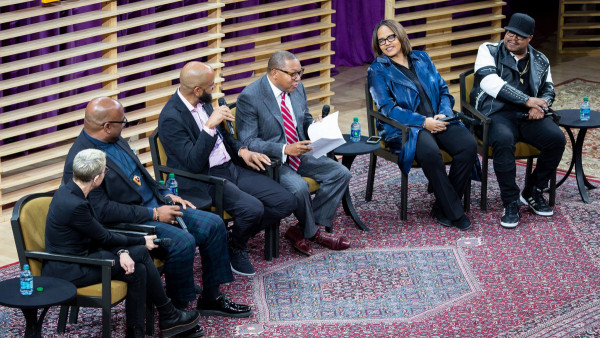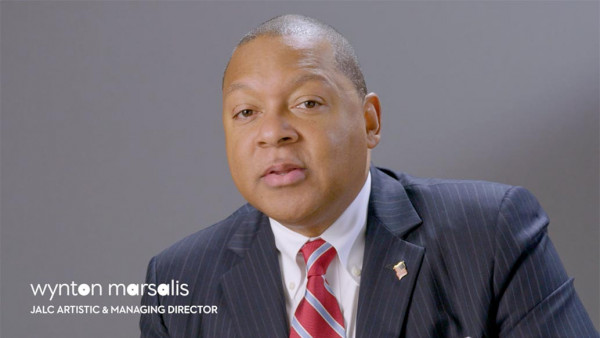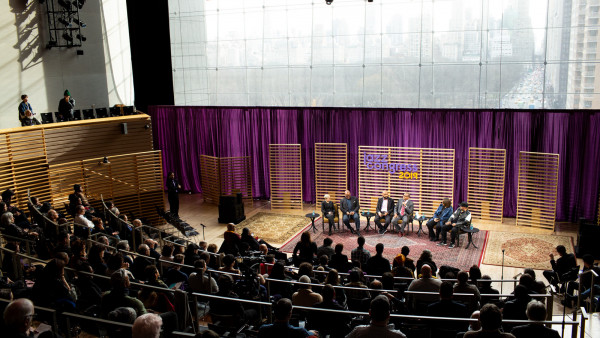Jazz Congress and Winter Jazzfest draw international crowds to New York
The increasingly broad world of jazz seemed broader than ever at the 2019 editions of Jazz Congress and Winter Jazzfest in New York earlier this month.
Both are magnets for performers, fans, students, booking agents, concert promoters, radio programmers and an array of other music-industry professionals from around the globe.
“The word ‘jazz’ means so many things to so many people. When you go to Jazz Congress, you realize just how broad it is,” said San Diego-based singer Allison Adams Tucker, who since 2009 has done six concert tours of Japan and five of Europe. For the past six years, she has attended both annual events in New York and — this year — remained there an additional week to record her upcoming fourth album, “Retro Trilogy.”
“Jazz Congress is hugely influential in introducing me to a collective thought for jazz. This year was jam-packed with information I can use that is right on target for me,” continued Adams, who sings fluently in six languages. “And Winter Jazzfest helps me to further develop my ear and my understanding of music. It also lets me watch how other artists are branding themselves, putting themselves out there and aligning themselves with other musicians.”
Winter Jazzfest celebrated its 15th anniversary from Jan. 4 to 12. It drew 14,000 attendees of all ages, an especially impressive number for an event that features at least as many young new artists as it does older established ones. Winter Jazzfest performers appeared in six lower Manhattan nightclubs for the event’s first weekend (the Half Marathon) and in 11 venues (the Marathon) for its second weekend.
In between came individual marquee concerts by such top attractions as sax greats Gary Bartz and Pharoah Sanders, trumpeter Terence Blanchard (a 2019 Oscar nominee for his “BlacKkKlansman” film score) and the genre-leaping trio The Bad Plus, which will perform Feb. 12 at the Athenaeum Music & Arts Library in La Jolla. All told, nearly 150 different bands and solo artists performed over Winter Jazzfest’s nine-day 2019 run.
The two-day Jazz Congress was held for the second consecutive year at Jazz at Lincoln Center, after launching in 2013 as Jazz Connect Conference at the nearby New York Hilton.
Co-presented by JALC and Jazz Times magazine, this year’s edition on Jan. 7 and 8 drew nearly 1,100 attendees from 42 North American cities and 19 countries. Apart from an all-star, four-hour tribute concert to recently deceased trumpet star Roy Hargrove, Jazz Congress focused almost entirely on panel discussions. All of it was live-streamed.
Topics ranged from “Presenting Jazz on the West Coast,” “The Importance of Artist Credits in the Digital Age” and “Women Big Band Leaders” to “Jazz Down Under: Spotlight on Australia,” “Making Space in Jazz for Transgender Voices” and “Jazz, Swing, Race and Culture,” which featured Terri Lyne Carrington, Christian McBride, Myra Melford, Nicholas Payton and trumpet star and JALC artistic director Wynton Marsalis.
Fellow trumpeter Payton — who performs at the Feb. 16 “Jazz in the Key of Ellison” concert at San Diego’s Balboa Theater — got things off to a provocative start.
“My first question is: ‘What is jazz?’ ” Payton said to the overflow audience. “At the root of it, it is black music created by enslaved Africans who were not allowed to speak their native tongue…”
Marsalis responded a few moments later: “The music doesn’t have a racial identity, because race was a false construct created to oppress people. All black people can’t jump, dance, swing… I think — because the DNA tells us everybody comes from Africa — jazz puts you in a mobile environment…
“An art form does not come from all of the people at once, but from some of the people over time. The ethnic construct of a group obliterates the concept of ‘I,’ ‘us,’ ‘them.’ All dominant cultures see themselves as dominant. But culture goes beyond money and dominance. We have a problem with identity as a nation. Whatever our differences are, certainly we have a lot more in common.”
Honoring one of the ‘masters of the universe’
Marsalis and his saxophonist brother, former “Tonight Show with Jay Leno” band leader Branford Marsalis, also took part in “The Art Blakey Centennial Celebration.”
It was held in honor of the late drum legend, Art Blakey, whose fabled band, The Jazz Messengers, served as a graduate school for a host of young jazz artists over a period of several decades. Thanks to Blakey’s savvy mentoring skills, a good number of them later went on to achieve musical prominence on their own.
In addition to the two Marsalis siblings, about two dozen other alums of the Jazz Messengers participated in this massive panel discussion. Three rows of seats were required to accommodate them all.
The opportunity to see such a large number of former Jazz Messengers together was unprecedented and historic. Alas, having so many musicians in a single panel discussion ensured that only some of them actually had a chance to field questions.
Among the luminaries on hand were such illustrious former Blakey collaborators as Kevin Eubanks, Randy Brecker, Reggie Workman, Billy Harper and Harold Mabern. (Blakey will also be honored at an April 20 San Diego Symphony “Jazz at the Jacobs” concert.)
“Art broke me into pieces. But after eight months (with him), I had the vision of how I should be,” said Branford Marsalis, who was still in his teens when he became a Jazz Messenger in the early 1980s.
Drummer Ralph Peterson beamed as he recalled a world tour with Blakey: “I played ‘A Night in Tunisia’ with him in Tunisia! Sometimes, I felt like I was playing with one of the masters of the universe.”
By design, Winter Jazzfest and Jazz Congress overlap. Together, the two events offered attendees a dizzying panoply of opportunities to gauge the current state of jazz and its potential future directions.
Both annual events coincide with the Association of Performing Arts Presenters convention in New York. Now in its 62nd year, APAP draws several thousand attendees from all 50 states and dozens of countries around the world to hear a multitude of showcase performances.
“What’s remarkable is that, every January, there is this constellation of different performing arts and music-related events in New York City,” said Daniel Atkinson, the Athenaeum’s veteran jazz program coordinator and the director of UC San Diego Extension’s Department of Arts, Humanities & Languages.
He is also the treasurer of the nonprofit Western Jazz Presenters Network. The network’s annual January conference in New York is timed to coincide with APAP, Winter Jazzfest and Jazz Congress, which Atkinson regards as “the annual homecoming of the international jazz community.”
‘Jazz is really thriving’
The confluence of all these events can be overwhelming and exhausting, but in a very good way.
“It provides a unique opportunity for me to hear music and network with other presenters, festivals, artists, managers and agents,” Atkinson said. “Basically, anyone involved in this industry is here. So it’s an extremely rich opportunity to share information and learn about what is coming down the pike, in terms of new music products and artists.”
Those sentiments were seconded by Molly Clark, the associate director of artistic planning and education for UC San Diego’s 15-year-old ArtPower performance series.
“I attended the second weekend of Winter Jazzfest and I’ve gone for five of the six years that I’ve been at ArtPower,” Clark said.
“It benefits me directly, because I curate our jazz series and it’s an incredible opportunity to hear so many great artists at one time. Last year, we presented trumpet phenom Keyon Harrold — and that was a direct result of me seeing him at Winter Jazzfest three years ago. I didn’t know who Keyon was then and he’s probably one of the best performers we’ve presented at UCSD.
“You sometimes hear these conversations that ‘jazz is dying,’ just like ‘classical music is dying.’ But Winter Jazzfest is a place where you can see that jazz is really thriving. And it is thriving across demographic lines with audiences of all ages and races. It’s always interesting to see who will be the breakout star. And, sometimes, you don’t who that is until you show up and the line of people waiting to get in goes down the block.”
Other San Diegans were on hand for the Jazz Congress and Winter Jazzfest, including tireless area jazz champion Arlene Damasco, who works closely with Young Lions Jazz Academy founder and Jazz at the Jacobs’ curator Gilbert Castellanos.
Also on hand was KSDS Jazz 88.3 FM general manager Ken Poston and three staff members from the San Diego radio station, which has won multiple national awards for its all-jazz programming. The four took turns staffing a booth at Jazz Congress, where they provided promotional materials about KSDS.
“I want to see us getting more recognition on a national basis, especially now that we can be picked up by anybody, anywhere, via streaming,” Poston said.
“We’re going to start doing some national programs, which we’ll distribute to PBS stations. We’re doing a lot of artist interviews while we’re here in New York and we’ll launch in early 2020 with a multi-part series on jazz and civil rights. We’re in the beginning of the process.”
Poston chatted with the Union-Tribune following the arresting panel discussion “Jazz in Troubled Times.” It featured pianist and 2017 Ojai Music Festival music director Vijay Iyer, noted singer René Marie and Afro-Latin Jazz Orchestra leader Arturo O’Farrill, who last May led his band and a slew of guests in concert last May on the Tijuana side of Friendship Park at the U.S.-Mexico border. It resulted in “Fandango at the Wall,” a live album, film and book.
“We have never not known troubled times and oppression, and this music we call ‘jazz’ has always reflected that,” noted Iyer, who is also a music professor at Harvard University and performs March 7 at UC San Diego.
O’Farrill agreed, adding: “It’s not physical realities or political realities that separate us — it’s us. ‘The wall’ is cultural and socio-political. … Nationalism is anathema to our music.”
by George Varga
Source: San Diego Union Tribune



